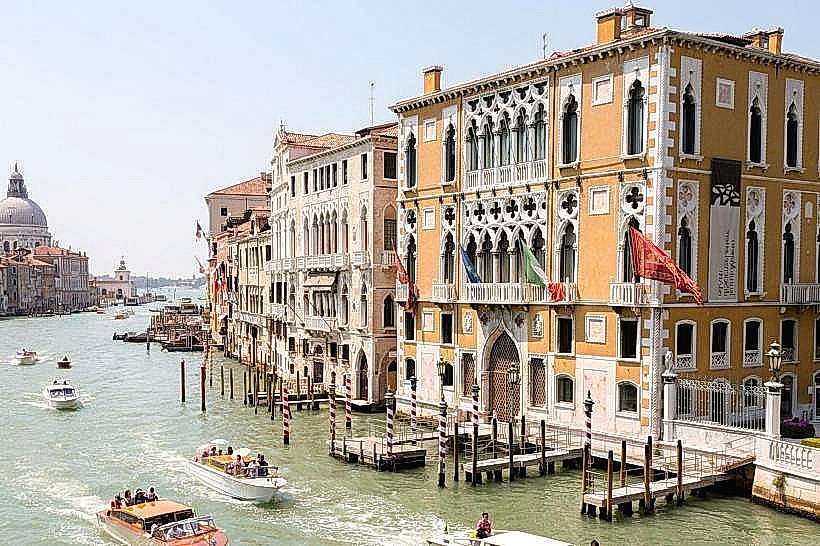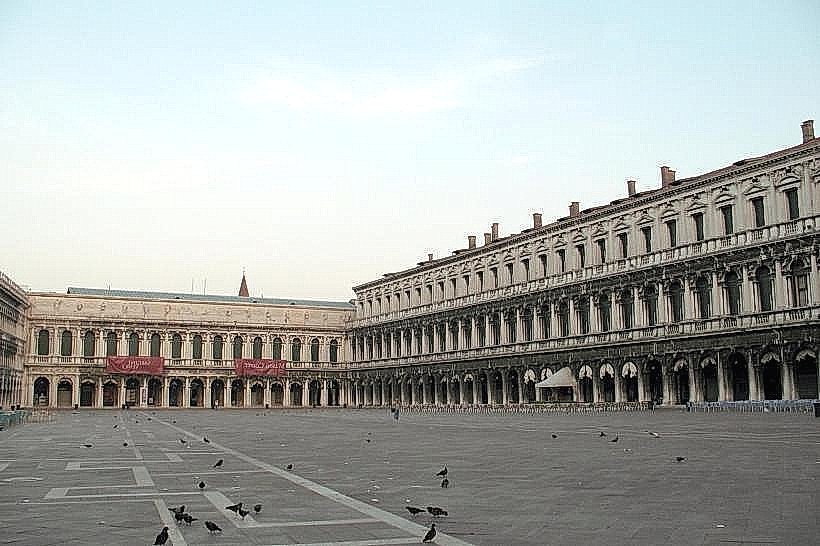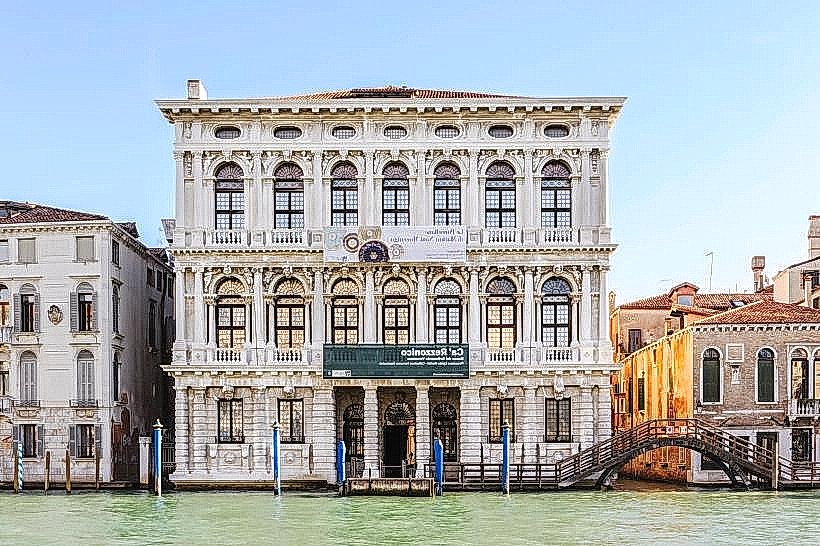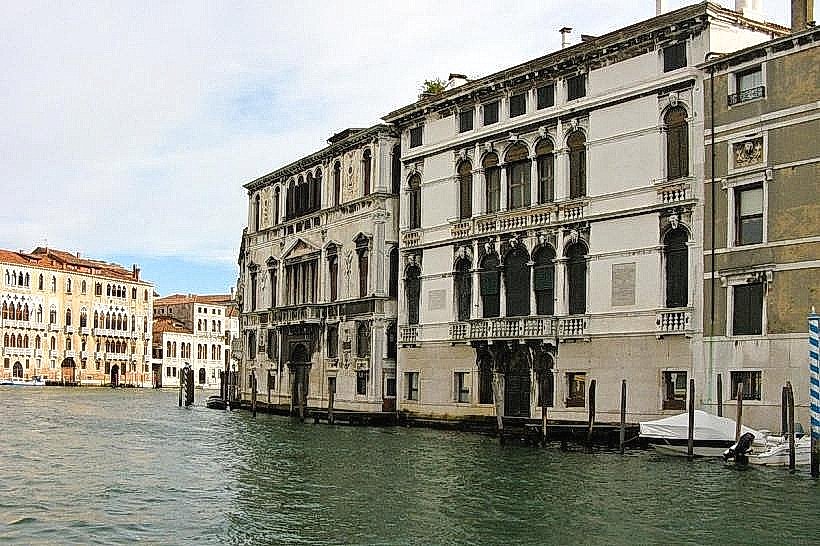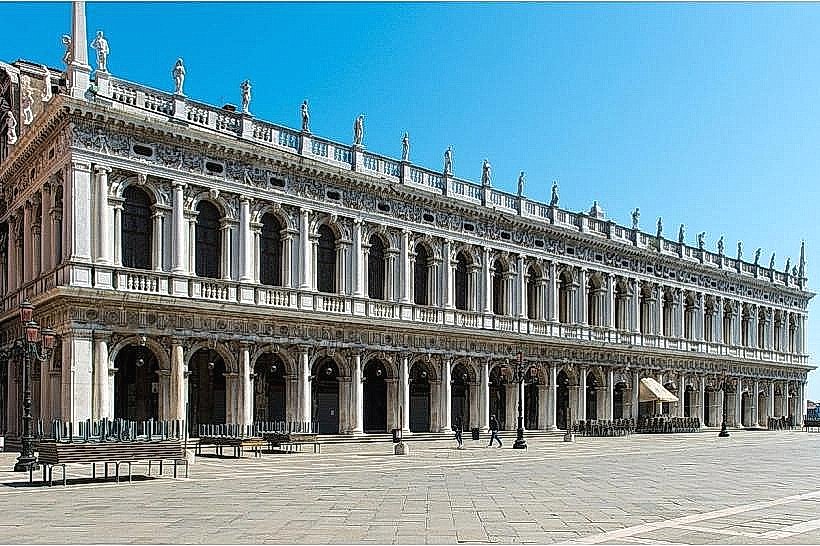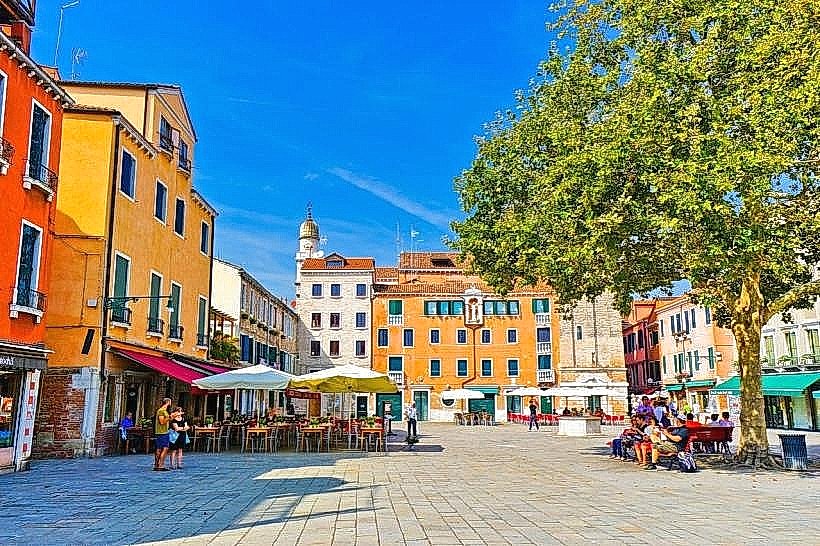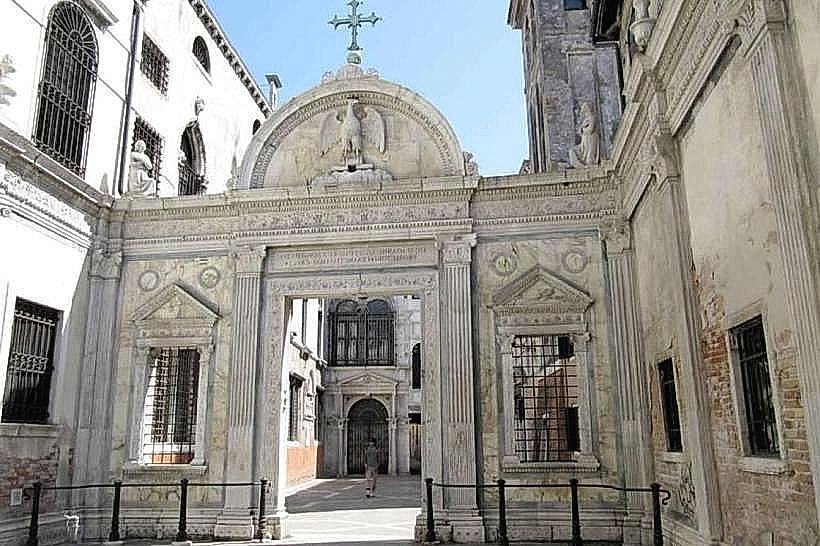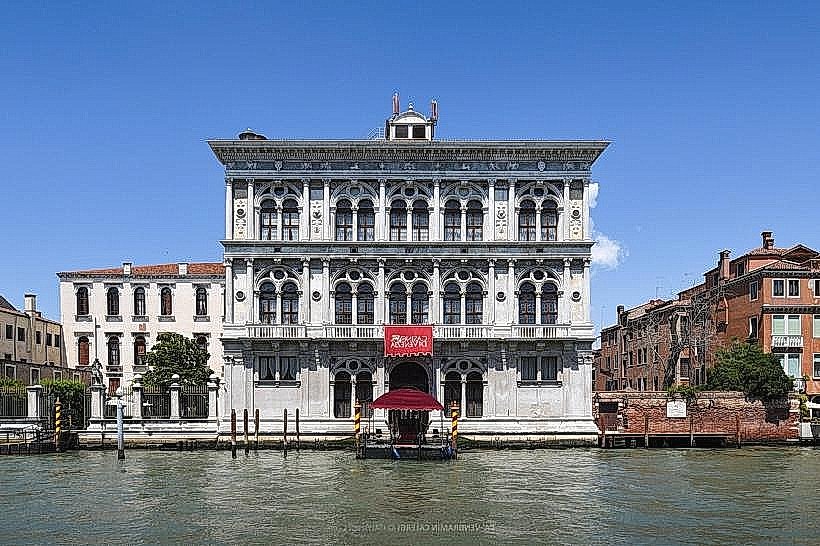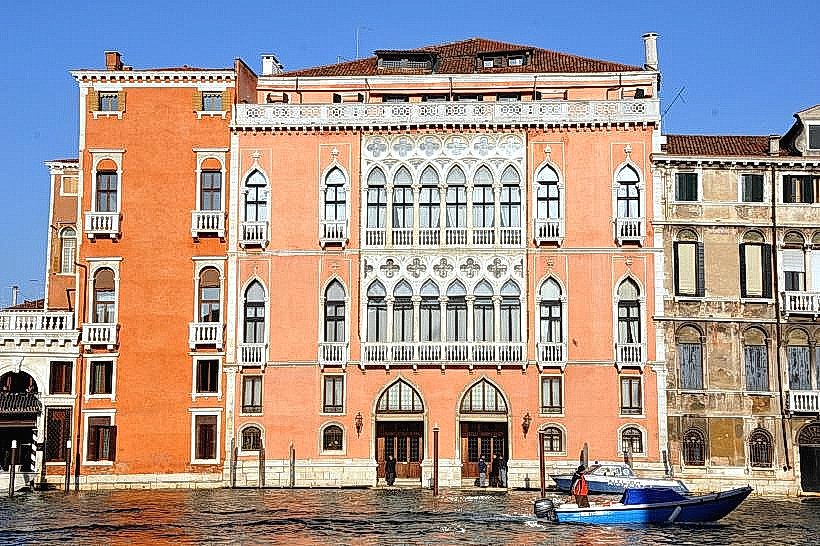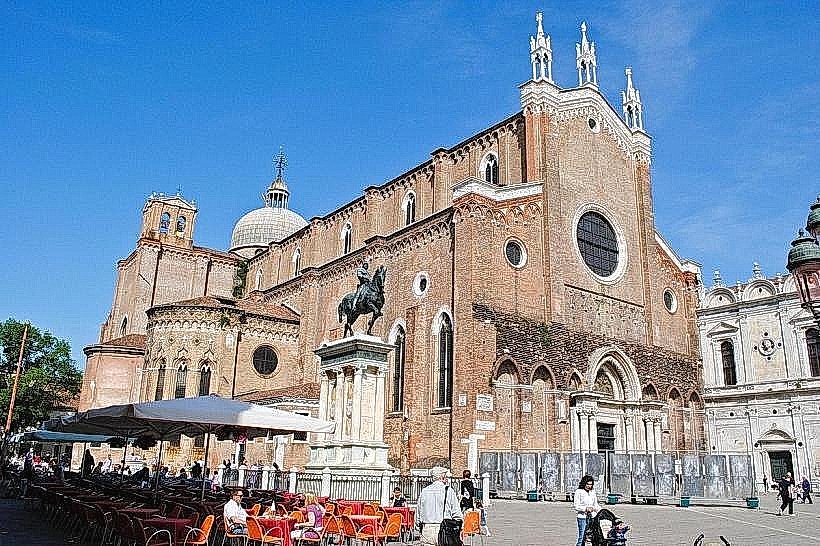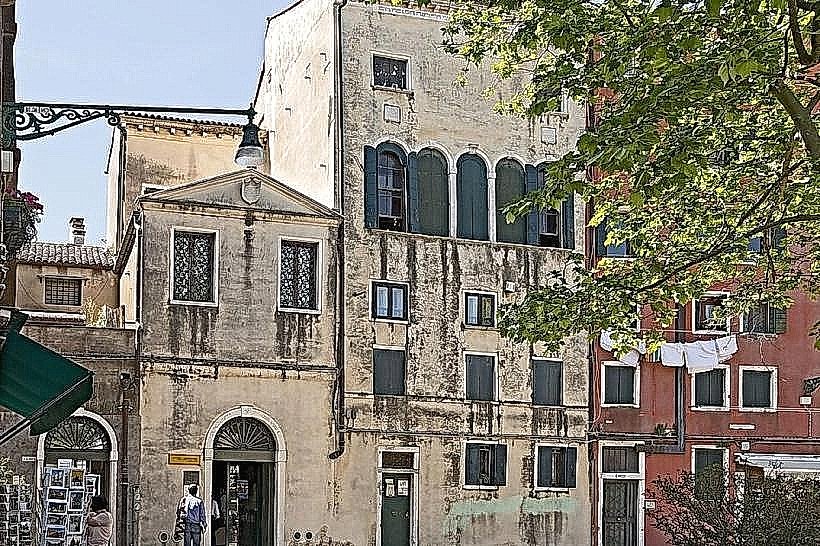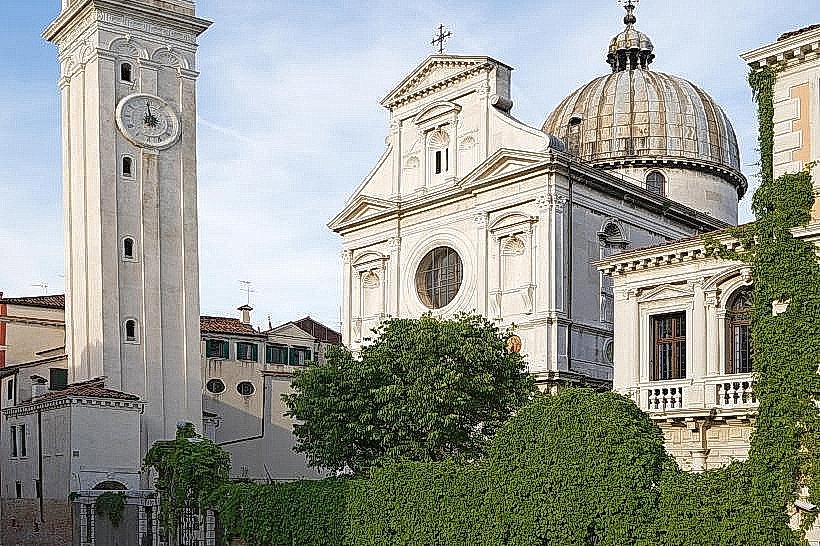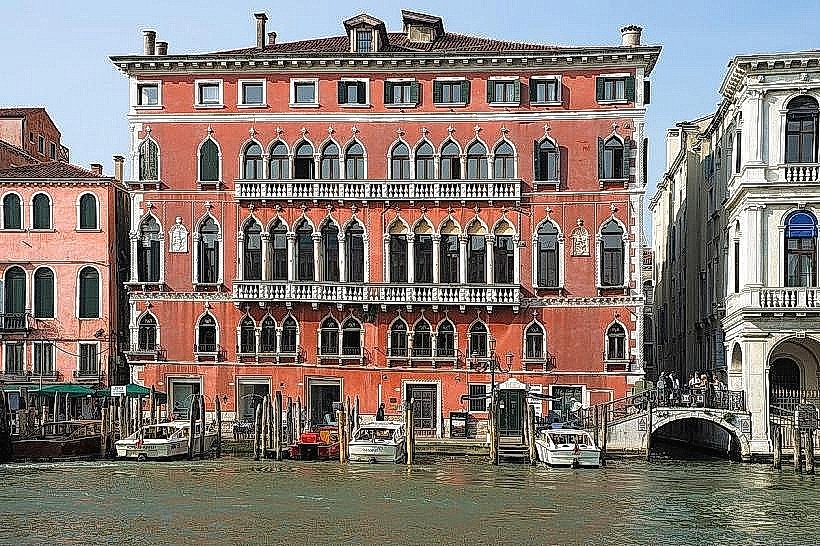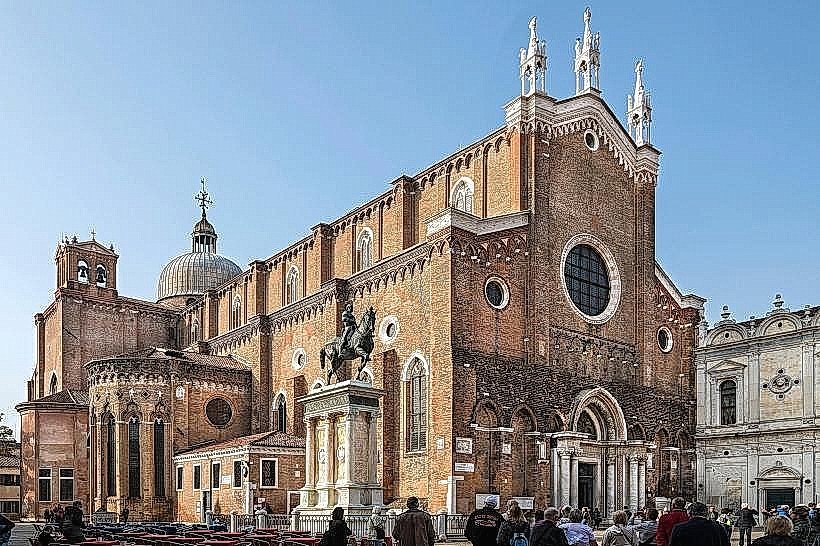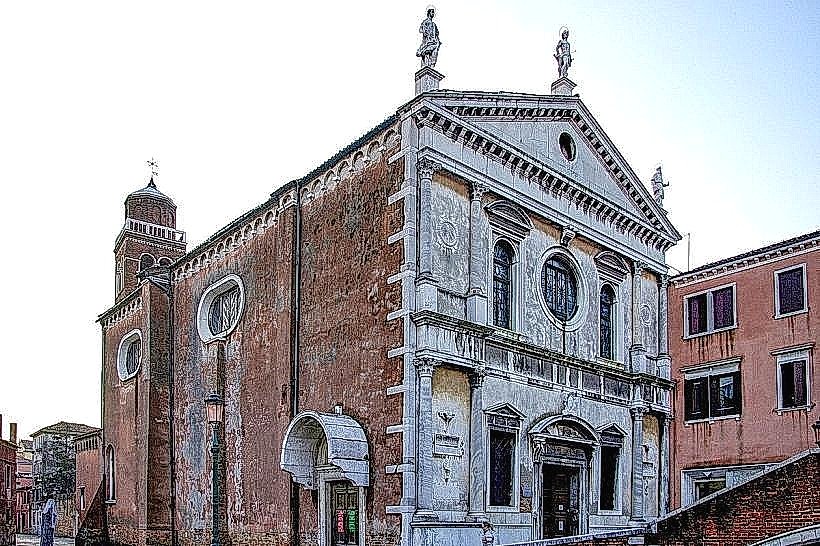Information
Landmark: Palazzo FortunyCity: Venice
Country: Italy
Continent: Europe
Palazzo Fortuny, Venice, Italy, Europe
Overview
Hidden in the narrow, hushed lanes of Venice’s San Marco district, Palazzo Fortuny-once called Palazzo Pesaro degli Orfei-feels like a secret haven where art, fashion, and imagination breathe beneath its cool stone walls, at the same time unlike the grand palazzi gleaming over the canal, this one keeps its beauty tucked behind shuttered windows, sharing it only with those who cross the threshold.This palace, once the home and workshop of Spanish-born artist Mariano Fortuny y Madrazo, now serves as a museum and a vivid reminder of the restless spark that fueled Venice’s early 20th‑century avant‑garde-a setting where light still filters through silk screens he touched, therefore built in the 15th century, the house is a graceful piece of Gothic Venetian design, where the cool stone arches meet the warm glow of a hearth and noble charm.Its façade, turned toward Campo San Beneto, shows off pointed arches and slim windows in true late Gothic style, while a hint of Byzantine grace still clings to its balanced lines, then beneath its plain façade stretches a vast interior, where high ceilings lift into dim corners and soft light spills across the perfect stage for Fortuny’s experiments in fabric, photography, and theater design.When Mariano Fortuny reached Venice at the close of the 19th century, he turned the vintage palace into a living studio-part home, part laboratory-where light shimmered across bolts of silk and ideas came to life, then painter, inventor, stage designer, and fashion visionary, Fortuny turned the building into a showcase of his genius-pleated silk gowns that shimmered like water, richly printed velvets, ornate lamps, and dramatic lighting systems that made his name known across Europe.His signature piece-the Delphos gown, a ripple of finely pleated silk inspired by ancient Greek sculpture-became an icon of early modern fashion, worn by artists, actresses, and aristocrats drawn to its quiet, effortless grace, besides inside the palace, Fortuny played with color-mixing deep red dyes, streaks of pigment, and shafts of light that spilled through tall arched windows.On the upper floors, workers dyed long rolls of fabric into shimmering shades that caught the light like water, and up in the attic, photographers and set designers filled their studios with props and models, therefore craftsmanship met technology, where ancient motifs brushed against modern vision, and the region seemed to hum with a quiet, brilliant energy.Step inside Palazzo Fortuny and it’s not a museum you find, but the hushed, intimate world of an artist-brushes still damp, light pooling softly across faded velvet, to boot soft light fills the rooms, where rich fabrics hang along the walls and rough wooden beams stretch overhead.Paintings, fabrics, lamps, and sketches sit much as Fortuny placed them, carrying the quiet pulse of a studio still humming with ideas and the faint smell of oil paint in the air, and visitors often call the experience immersive-the faint scent of aged fabric, light softening through tinted curtains, and the quiet echo of footsteps on wood create an atmosphere caught between a Venetian atelier and a Renaissance theater.It’s a vivid journey through the soul of a man who tried to fuse art and life so completely you can almost feel paint drying under his fingertips, along with today, the Museo Fortuny belongs to the Civici Musei di Venezia and still hosts exhibitions that capture Fortuny’s eclectic spirit-paintings glinting under soft light, fabrics rich with color and history.If I’m being honest, Fortuny’s pieces often share the spotlight with today’s artists, photographers, and fashion designers, sparking a vivid conversation between past and present-like ancient silk catching fresh light, meanwhile the museum’s curation keeps alive his spirit of experimentation and individuality, revealing how Venice-down to a shadowed canal or sun-warmed stone-still sparks fresh reinvention, under certain circumstances Mariano Fortuny lived and worked in the timeworn palace until his death in 1949, leaving behind rooms filled with patterned fabrics and soft light; after he was gone, his wife, Henriette Negrin, protected his collections and later gave them to the city, furthermore his legacy rises beyond fashion and design-it breathes a philosophy of light, texture, and invention, shaped by the careful hands of Venetian craft yet open to the world.In San Marco’s Palazzo Fortuny, *A Quiet Enchantment* lingers as one of Venice’s most atmospheric places-quietly alive, never showy, never stuck in the past, where dust motes drift through soft afternoon light, in addition it pulses with memory-the soft hiss of silk, a lamp’s warm gleam, the faint trace of a mind still burning with creation.Between the city’s sweeping canals and carved stone facades, this quiet palace murmurs that Venice’s real magic lingers in the dim arches, waiting for anyone curious enough to step a bit farther in.
Author: Tourist Landmarks
Date: 2025-11-10

